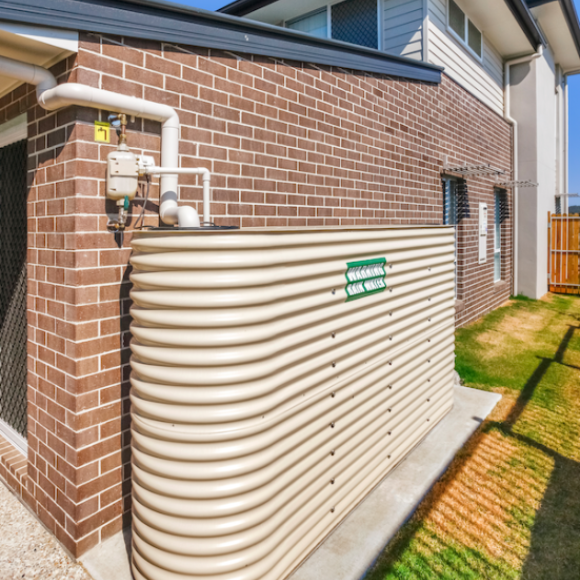
This Friday (22 March) is World Water Day, a day to raise awareness of this precious commodity. Do you monitor your household’s use of water, or has recent wet weather caused you to become a little complacent?
While we might feel that there has been an excess of rainwater falling over this summer, the BOM (Bureau of Meteorology) tells us that globally, 2023 was the warmest year on record, and that the August-October 2023 period was Australia’s driest three-month period on record since 1900.
If you haven’t already, installing a rainwater tank is an inexpensive and effortless way to ensure that your household has plenty of water in dry times. It is also handy for capturing water that is free of minerals and chlorine for watering lawns, yards and gardens, as well as washing cars or rinsing windows.
By harnessing what is literally falling from the sky, you will not only notice a marked dip in water costs, but also a reduction in storm water runoff, which in turn helps prevent erosion and flooding.
If you are thinking of installing a rainwater tank, here are some tips to consider:
– If the tank is going to be large, consult a builder or engineer about structural support.
– Have a plumber or the tank manufacturer do the installation. This will ensure the system operates efficiently, and is easy to maintain.
– Lead-based paint and flashing or tar-based coatings found on some roofs affect water quality. Make sure your roof material is non-toxic.
– A U-shaped gutter traps leaves and twigs. If possible, choose water-friendly gutters, or cover existing gutters in mesh.
– Try to make all pipes ‘dry’. This means having a continuous downward path so water can’t accumulate between flushes.
– Have all openings covered with mosquito-proof mesh.
– Install a first flush diverter on the downpipe. This is especially important in areas of high pesticide use or atmospheric pollution.
– Make sure the tank overflow outlet is connected back into the stormwater pipe or irrigation system.
– Make frequent use of your water supply to keep it moving and aerated.
– Clean the inside of the tank every few years, as sediment will accumulate.
You might need to install a pump to provide adequate water pressure for some appliances, and finally, consider appliances that can operate at less than mains pressure.

